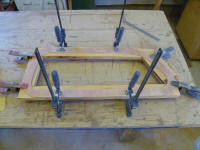
110 Cookson Lane | Whitefield, ME 04353 | 207-232-7600 | tim@lackeysailing.com
After milling the two mahogany boards into the two different widths I needed (2.5" for the top, bottom, and vertical end, and 3.5" for the more angled end), I laid out each individual rough frame as needed, cutting the vertical members as needed to fit tightly between the top and bottom sections. I clamped the plywood template in place for each frame to ensure proper alignment and placement of each rough frame piece, and traced along the inside and outside edges of the template to provide future reference marks for when the time came to glue the frames together.
To reinforce the joints, I elected to install a thin spline where the frame members met; the spline would provide alignment and stability, plus extra gluing surface for a stronger hold, while being simple to mill and install. Because I planned a 1/2" rounded profile on the edges of the final frame, I held the slot for the splines closer to the bottom of the frames, so that it would remain below the rounded profile when all was said and done.
I milled 1/2" deep grooves, each one saw blade thickness in width, along the edges of the frame pieces as needed, and prepared mahogany splines to fit the groove snugly, but not too tightly. Then, with some minor additional preparations, I was ready to glue up the frames.
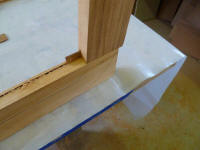
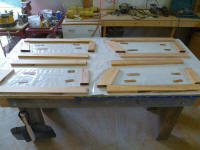
After coating all the mating surfaces with unthickened epoxy, I glued each frame together with thickened epoxy, being sure to get plenty in the grooves and on the splines themselves. I clamped each frame tightly, keeping the layout marks from the plywood template aligned as need be. I didn't bother cleaning up the epoxy squeezeout since I'd be sawing the frames to their final shape later, which would automatically remove the excess and protruding spline ends.

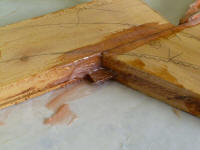
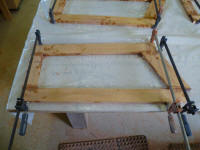

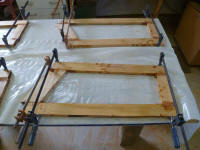
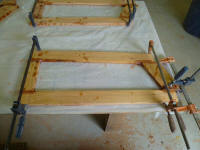
The new fuel tank required a simple platform for support. I planned to suspend the new tank beneath the cockpit sole, as was the original, hopefully using the original metal straps.
I constructed a platform of 12mm marine plywood, using two sections to parallel the shape of the bottom of the tank. Where the two sections met at the angle, I cut 8° bevels to form a tight miter joint. Once the two sections had been cut, I masked off the tank directly beneath the joint (even though epoxy shouldn't stick to the polyethylene tank material), and wet out the plywood edge grain and about 4" of the plywood surface with unthickened epoxy before pressing the joint together in a bed of thickened epoxy adhesive.
Finally, I installed two layers of tabbing over the seam and left it to cure overnight. I used tape as needed to prevent the plywood from sliding, even though it showed no inclination to move on its own.
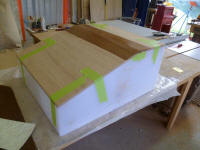
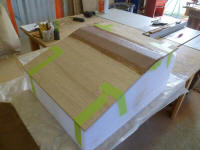
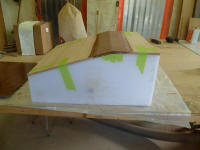
Total Time Billed on This Job Today: 6.25 hours
